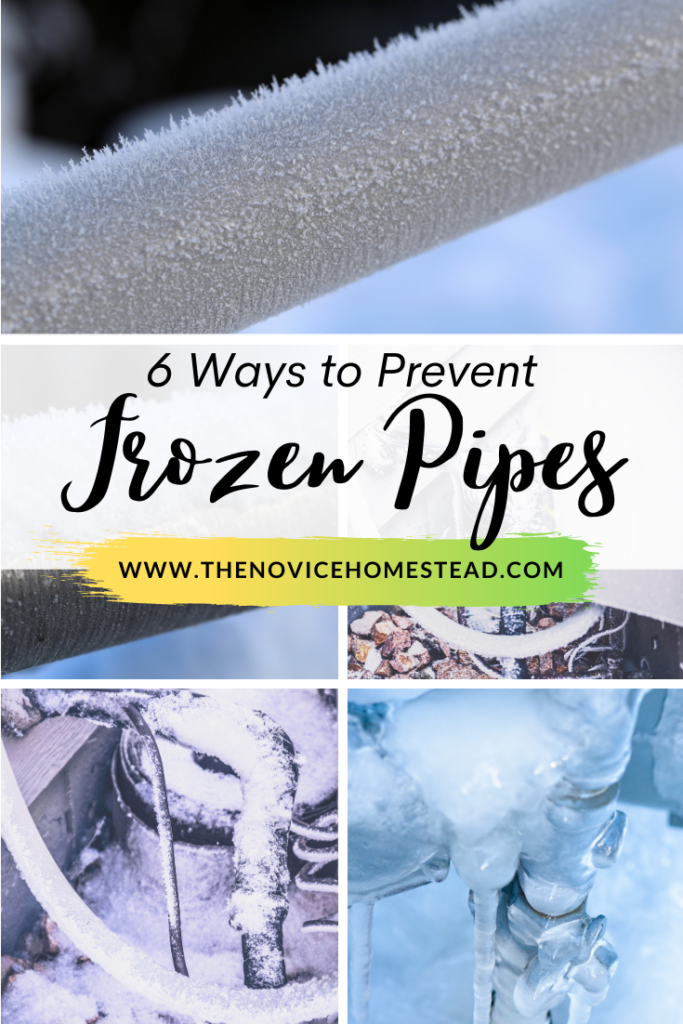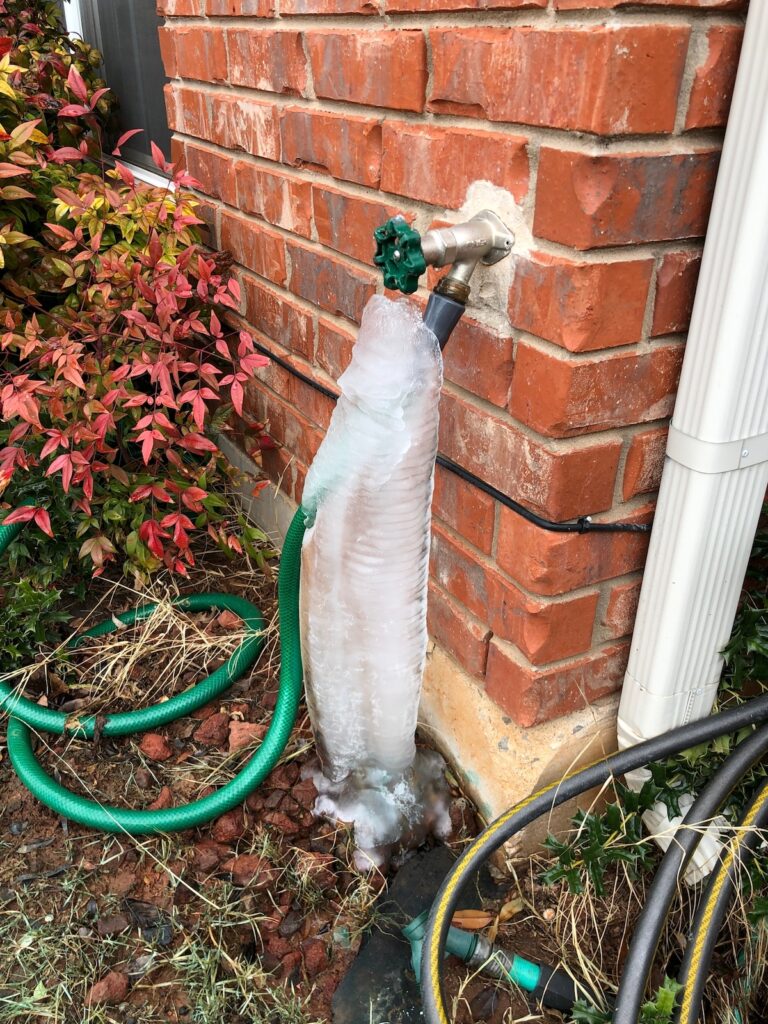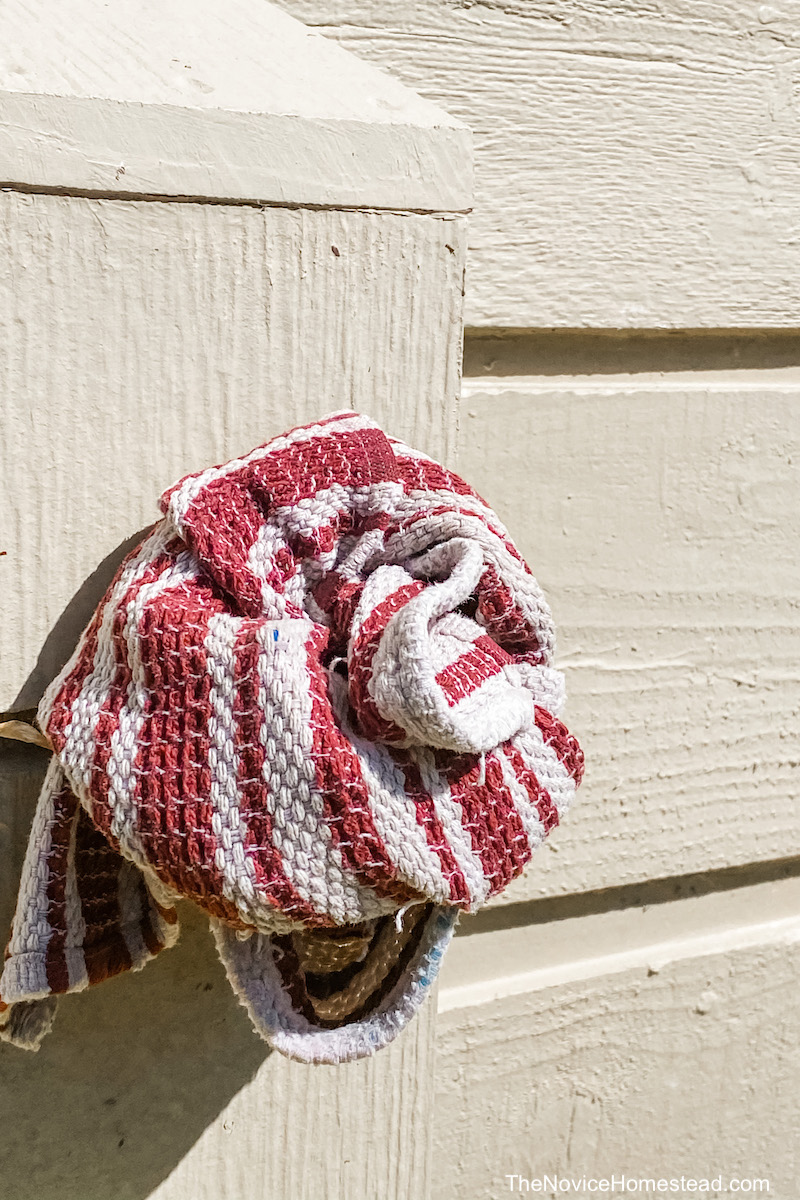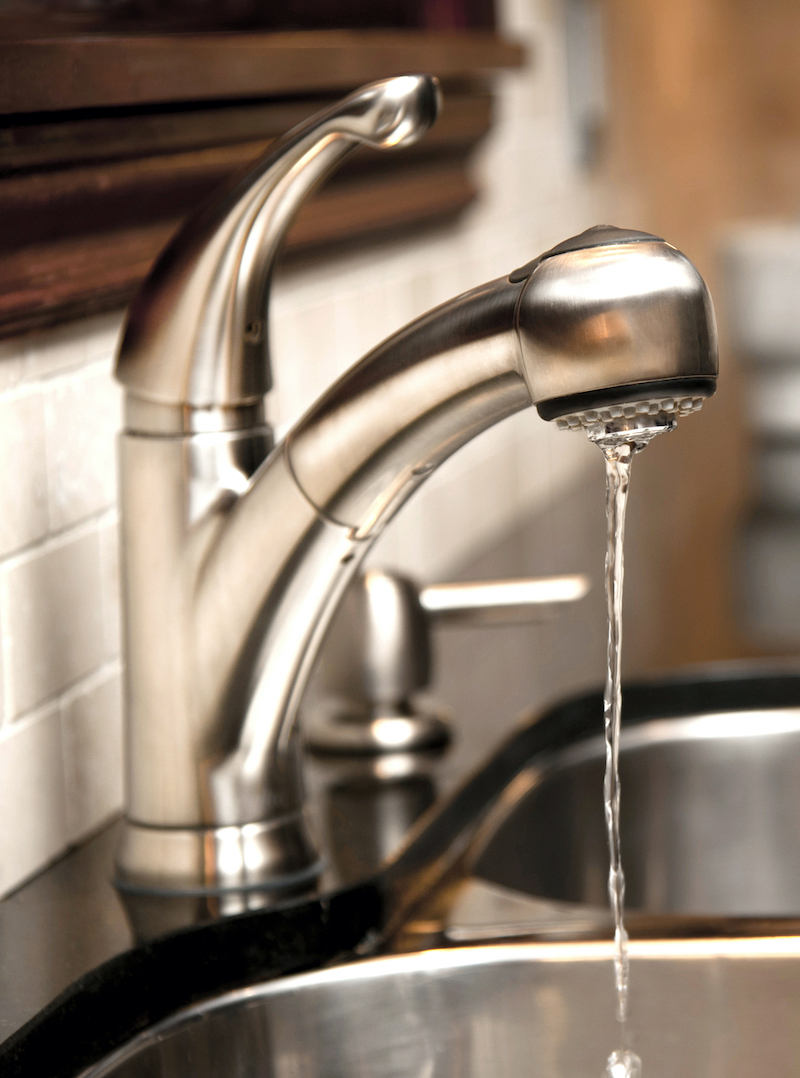Frozen pipes can lead to bursting, water leaks, and expensive damage to your home. These tips to prevent frozen pipes can help prepare your plumbing for a winter storm and freezing temperatures.

When I lived in Michigan, we never worried about frozen pipes. That’s because homes in cold climates are usually better insulated for freezing weather.
However, in warmer climates (like here in Texas), homes are built to stay cool during the hot summers. Pipes are not always insulated as well (or at all) and this can lead to issues during uncommonly cold weather.
Why Do Pipes Burst in Winter?
When water freezes, it expands. Now imagine that there is water sitting in the pipes in your house, waiting to be used.
When that water freezes, it expands and creates pressure within the pipes. The air that was in the pipes along with the water has nowhere to go…but outward.
If this pressure causes a burst in the pipes, then any water that isn’t frozen (say further down the line) is going to flow out of the hole in the pipe…and into your house. Or your garage. Or your attic.
So our goal is not only to prevent freezing, but also to prevent pressure buildup. And in doing so, we can hopefully prevent costly plumbing disasters!
Because if everyone is having plumbing trouble during a winter storm, it might take longer to get help. During the recent freeze in Houston, one plumbing company said it was getting 14,000 calls a DAY!

Note: We’ve included shop-able ad links to products we love and use; read our disclosure policy here.
6 Ways to Keep Your Pipes from Freezing
The following steps can help keep your pipes from freezing during a cold snap. These are things our family has done to successfully prevent major plumbing issues.
1. Turn Off Water to Outdoor Faucets
If you have a way to shutoff your outdoor fixtures, do so. These outdoor faucets and pipes are more likely to be exposed and prone to freezing. If you can turn the water off at the source and drain them, you can help prevent issues with them.
You’ll also want to drain and disconnect any garden hoses. Store them until the freeze passes.
2. Insulate Exposed Plumbing
If you’re not able to turn off water to your outdoor fixtures without shutting off water to the entire house, the next best step is to insulate them.
One of the best ways to do this is with tube insulation made from foam, which looks like a small version of a pool noodle and is designed to fit snugly around pipes.
If you’re in a hurry or are unable to find tube insulation, you can wrap your pipes and faucets with extra towels, blankets, etc.

In addition to outdoor plumbing, you’ll want to make sure any lines in your garage, attic, and/or under the house are also insulated. These areas may also be susceptible to sub-freezing temperatures.
Be sure to take a walk around your home and seal any cracks, close crawl space doors, etc. Look for ways that cold air could get into your home and block it.
Don’t forget your fridge!
If your fridge has an ice maker or water filter, be sure to check those pipes too. I’ve seen cases where a homeowner forgot to insulate the lines running to the fridge and ended up with a busted pipe.
3. Open Kitchen & Bathroom Cabinets
During a hard freeze, leave all under-sink cabinet doors open. This allows warm air from your house to circulate around the plumbing.
If you have kids or pets, be sure to secure any household cleaners or toxic chemicals!
4. Let Cold Water Drip
Anytime temperatures are below freezing (32°F), it’s a good idea to let faucets drip. You don’t necessarily need to run every faucet in the house, but you’ll want to turn on the faucets, showers, etc. that are on an exterior wall.

How much water should you run?
You don’t need the water running at full blast — a steady trickle will be sufficient. The purpose is to keep water moving through the pipes so it can’t freeze.
I’ve seen mixed information on this, with a few recommendations saying not to run the water. However, the majority of the research I’ve found says that this IS an effective strategy to prevent frozen pipes.
All I can tell you is that we always leave a couple faucets trickling during winter storms and so far we’ve not had pipes freeze. I’ve also heard from friends that forgot to do so — and ended up with frozen pipes. For me, the evidence speaks for itself.
5. Maintain a Minimum Temperature in Your House
During a winter storm, you may be asked to conserve electricity. However, it is important to keep your house above 55°F to help prevent frozen pipes.
6. Keep Garage Doors Closed
If you have a garage, check to see if any of your plumbing passes through it. If so, shut your garage doors and do not open them if at all possible. This helps prevent heat trapped in your garage from escaping.
How to Prevent Frozen Pipes without Heat
If the power goes out during a winter storm, it’s going to be harder to keep your water pipes from freezing.
Proper insulation is a must. We discussed wrapping pipes above, and you’ll want to take extra care to do so if you lose power/heat.
If at all possible, a generator is a worthwhile investment to keep the heat on in an emergency. If your house runs on a well, a generator will also keep your pump running and water flowing into your house. Just make sure that your generator is installed by a licensed professional — you don’t want to cut corners when working with electricity and natural gas.
If you find yourself without heat and the interior temperature of your house drops below 55°F, your best bet may be to shut off water to your house and drain your pipes.
This is definitely an inconvenience, but may save you thousands of dollars in repairs if you end up with a frozen/busted pipe.
If you have a water heater with a tank, the water should stay warm for a few days, even without power. If an outage goes longer than a few days, you may need to drain your tank. This article has more detailed instructions on how to do that — you will also want to check with a plumber to find out if this is something you need to do.
What to Do if Your Pipes are Frozen
If you turn on your faucet and no water comes out (or only a drip), you may already have a frozen pipe. This is especially likely for pipes and fixtures with an exterior wall behind them.
If you can quickly locate the source of the problem, you may be able to fix it in time to prevent a major issue like a busted pipe.
If you find the pipe that is frozen, first turn on the faucet and leave it open. You’ll want water to be able to escape once you thaw the pipe.
Use a hair dryer or space heater to raise the temperature around the pipe until the ice clog thaws and water flows from the faucet. Do not use any type of open flame.
If you are unable to thaw the pipe or can’t locate the source of the issue, you’ll need to call a plumber.
In the meantime, shut off water to your home and open faucets. This will allow pressure to release — ice expands and will try to push air out of the pipes and that is what leads to bursting pipes.
Note: I’m not a professional plumber, however, I’ve gotten my advice from their recommendations. This post is based on my own experience and what has worked for our family and kept our pipes ok during freezing weather.
Thanks for the tip about keeping your home at least 55 degrees to prevent pipes from freezing. I’m sure that getting pipes insulated would help with this as well. My husband and I have been debating getting our pipes insulated, but I think it would be a wise investment for the future.